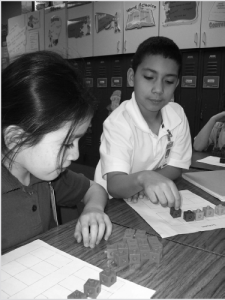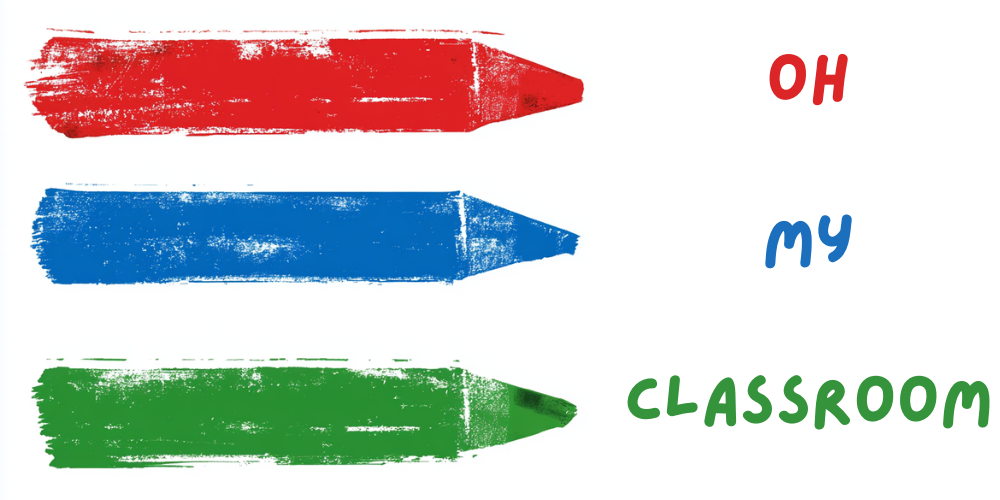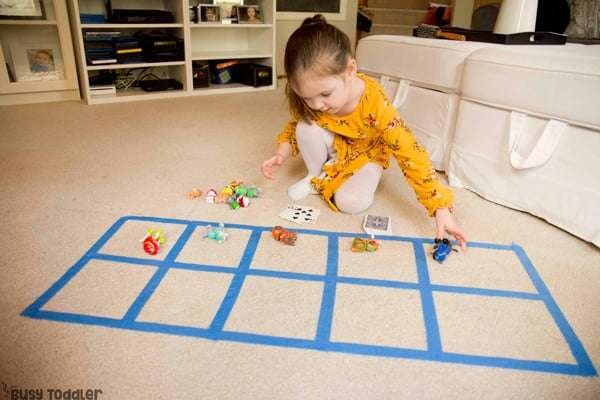Engaging young learners in math activities can sometimes be a challenge, but with the help of ten frames, teaching and practicing math concepts becomes a fun and captivating experience.
Ten frames are visual tools that provide a structured and interactive way for children to understand numbers, counting, and basic arithmetic.
They consist of two rows of five squares each, making it easy for kids to visualize and manipulate quantities from 1 to 10.
we will explore fun ten frame activities for kids that will ignite your child’s curiosity, promote active learning, and help them develop a solid foundation in math.
From counting and subitizing to addition and subtraction, these activities are designed to make math enjoyable and accessible to kids of all ages.
Ten Frame Race:

Create a ten frame race by dividing children into pairs or small groups. Give each group a ten frame and counters. Choose a number and announce it to the participants. The objective is for each group to represent the given number on their ten frame using the counters as quickly as possible. The first group to correctly fill their ten frame and shout out the number wins the round. This fast-paced game promotes quick thinking, reinforces number sense, and boosts children’s ability to subitize, which is the skill of instantly recognizing the number of objects without counting them.
Ten Frame Puzzles:

Create ten frame puzzle pieces by cutting out squares representing numbers and their corresponding ten frame representations. Mix up the puzzle pieces and challenge children to match the numbers with their respective ten frames. This activity promotes critical thinking, visual-spatial skills, and reinforces the connection between numbers and their visual representation on the ten frame.
Related: 20 Exciting Outdoor Math Games for Kids
Ten Frame Tower Challenge:

In this activity, provide children with a set of ten frames and counters. The goal is to build the tallest tower using the counters to represent numbers on the ten frames. Start with a random number and ask the children to construct the corresponding ten frame using the counters. As they progress, challenge them to build ten frames for different numbers and stack them to create a tower. This activity not only reinforces number recognition but also encourages spatial thinking and problem-solving skills as children strategize to build a taller tower than their peers.
Related: 20 Creative Olympic Games Activities for Students
Ten Frame Memory Game:
Transform the classic memory game into a captivating ten frame activity. Create pairs of cards, each displaying a number and its corresponding ten frame representation. Shuffle the cards and lay them face down on a table. Children take turns flipping over two cards to find a number and its matching ten frame. If a match is made, they keep the pair. If not, the cards are turned face down again, and the next player takes a turn. This game enhances memory skills, strengthens number sense, and reinforces the relationship between numbers and their visual representation on the ten frame.
Source: thekindergartensmorgasboard.com
Ten Frame Treasure Hunt:
Hide a set of small objects or picture cards around the room or outdoor area. Give each child a ten frame and ask them to find the hidden treasures that match the numbers on their ten frame. For example, if the ten frame displays the number 7, they should search for seven objects. This activity combines physical movement with number recognition and counting, making it an exciting and immersive experience for kids. It also encourages teamwork and collaboration if multiple children participate in the treasure hunt together.
Source: classroomsecrets.co.uk
Ten Frame Bingo:
Put a twist on the traditional game of Bingo by incorporating ten frames. Create Bingo cards with different ten frame representations instead of numbers. Distribute the cards among the children and have a stack of number cards. Call out a number, and the children need to find and cover the corresponding ten frame on their Bingo card. The first player to cover a full row or complete their entire card shouts “Bingo!” This game reinforces number recognition, encourages visual discrimination, and adds an element of excitement to learning with ten frames.
Source: boymamateachermama.com
Ten Frame Roll and Fill:
Give each child a blank ten frame and a pair of dice. In turns, children roll the dice and count the total number of dots. They then represent that number on their ten frame by placing counters or drawing dots in the squares. The game continues until the ten frame is filled. This activity enhances subitizing skills, addition, and fine motor coordination as children manipulate the counters.
Source: focusonmath.wordpress.com
Ten Frame Flash Cards:
Create a set of flashcards displaying numbers and their corresponding ten frame representations. Show the flashcards to children one at a time, and they have to quickly identify the number and visualize its ten frame representation. This activity improves number recognition, subitizing abilities, and helps children develop mental imagery of ten frames.
Source: mathkidsandchaos.com
Ten Frame Patterns:
Using a set of ten frames and counters, challenge children to create and extend patterns. Start with a simple pattern, such as alternating colors or shapes, and ask children to replicate it using the ten frames and counters. Gradually increase the complexity of the patterns, incorporating number sequences or skip counting. This activity promotes pattern recognition, critical thinking, and strengthens understanding of number relationships.
Source: twinkl.com.pk
Ten Frame Race to 100:
Divide children into pairs and give each pair a blank ten frame and a pile of counters. The objective is for each pair to take turns adding counters to their ten frame and racing to reach a total of 100. Players can add one or more counters per turn, but they must keep track of the running total. This activity reinforces counting, addition skills, and number sense, while also fostering a sense of competition and excitement.
Source: littlelearningangels.weebly.com
Ten Frame Number Bonds:
Introduce children to number bonds using ten frames. Provide a blank ten frame and ask them to choose a number between 1 and 10. Children then represent that number on the ten frames using two different colored counters. They must find two numbers that, when combined, equal the chosen number. For example, if the chosen number is 7, children can place 3 counters in one row and 4 counters in the other row. This activity promotes the decomposition of numbers and helps children understand the concept of number bonds.
Source: sadlier.com
Ten Frame War:
Adapt the traditional card game “War” to a ten frame version. Create a deck of cards with numbers and their corresponding ten frame representations. Divide the deck equally among the players. Each player simultaneously turns over a card and compares the numbers on their cards. The player with the higher number collects both cards. This game reinforces number comparison, and subitizing, and provides an exciting way to practice number recognition.
Source: pinterest.com
Ten Frame Dominoes:
Create a set of dominoes by drawing numbers and their corresponding ten frame representations on rectangular pieces of cardstock. Children take turns matching dominoes with the same total number of dots or counters on their ten frames. This activity strengthens number recognition, and counting, and promotes critical thinking and strategic decision-making as children plan their moves to create matches.
Source: recipeforteaching.com
Ten Frame Fill-in-the-Blanks:
Give children a partially filled ten frame and ask them to determine the missing numbers. For example, if the top row of the ten frame is filled with 4 counters, children need to recognize that there are 6 empty spaces below and fill them accordingly. This activity enhances number sense, and counting, and encourages children to analyze and complete number patterns.
Source: megaworkbook.com
Ten Frame Artwork:
Encourage children to create art using ten frames as their canvas. Provide them with a blank ten frame and a variety of art materials, such as colored pencils, crayons, markers, or even small stickers. Ask them to fill in the ten frame with colorful patterns, designs, or representations of objects (e.g., animals, flowers) using the squares as a guide. This open-ended activity promotes creativity, fine motor skills, and reinforces the visual structure of the ten frame.
Source: pinterest.com
Ten Frame Roll and Subtract:
Similar to the Ten Frame Roll and Fill activity, but with a subtraction twist. Children roll a pair of dice and subtract the smaller number from the larger one. They represent the resulting number on the ten frame by removing counters or erasing dots. This activity reinforces subtraction skills, and number sense, and helps children visualize the concept of taking away.
Source: akteacherlife.com
Ten Frame Bean Bag Toss:
Set up a large ten frame on the ground using hula hoops or tape. Assign each square in the ten frame a specific point value. Children take turns tossing bean bags onto the ten frame and earn points based on where their bean bags land. After each throw, they add up their points to practice counting and number recognition. This active and kinesthetic activity combines math with physical coordination and adds an element of excitement to ten frame learning.
Source: weareteachers.com
Ten Frame Go Fish:
Adapt the classic card game Go Fish to a ten frame version. Create a deck of cards with numbers and their corresponding ten frame representations. Deal a set number of cards to each player. The goal is to collect pairs of cards that match in number and ten frame representation. Players take turns asking for specific cards from their opponents. If the opponent has the requested card, they must hand it over. The player with the most pairs at the end wins. This game reinforces number recognition, and memory skills, and promotes strategic thinking.
Source: mathgeekmama.com
Ten Frame Outdoor Scavenger Hunt:
Take the ten frame learning outdoors by organizing a scavenger hunt. Hide objects or picture cards representing numbers around an outdoor area. Provide children with a ten frame and challenge them to find and match the hidden objects to their respective numbers on the ten frame. This activity combines outdoor exploration, counting, and ten frame skills, making learning a delightful adventure.
Source: pinterest.co.uk
Ten Frame Calculator Challenge:
Give children a set of number cards and a blank ten frame. Choose a target number and ask children to use the number cards and the ten frame to find different ways to represent the target number. They can place the number cards on the ten frame to demonstrate different combinations that add up to the target number. This activity promotes problem-solving, addition skills, and creativity as children explore various ways to compose the target number using the ten frame and number cards.
Source: scholastic.com

